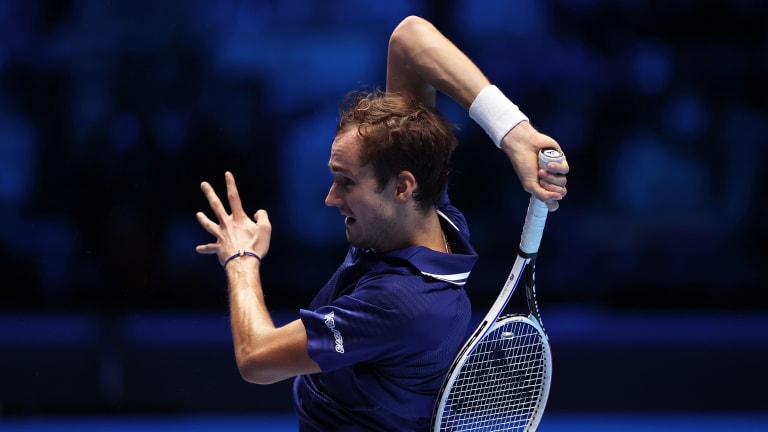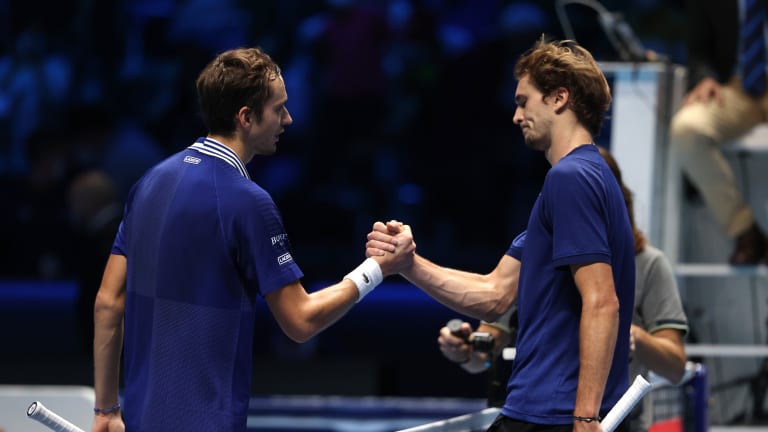ATP Finals
Reigning ATP Finals champion Daniil Medvedev has just enough answers to squeak past Alexander Zverev
By Nov 16, 2021ATP Finals
Inspired by Nadal, Cahill, respect abounds in Alcaraz-Sinner rivalry
By Nov 20, 2025ATP Finals
How the rivalry between Jannik Sinner and Carlos Alcaraz dominated tennis in 2025
By Nov 17, 2025ATP Finals
ATP Finals takeaway: Jannik Sinner walks the walk on making changes to Carlos Alcaraz matchup
By Nov 16, 2025ATP Finals
Jannik Sinner tops Carlos Alcaraz to retain ATP Finals title, ends 2025 on 15-match win streak
By Nov 16, 2025ATP Finals
Carlos Alcaraz meets Jannik Sinner for ATP Finals trophy | Preview, Pick, Where to Watch
By Nov 15, 2025ATP Finals
"Felt like I could do everything": Carlos Alcaraz books dream ATP Finals title tilt with Jannik Sinner
By Nov 15, 2025ATP Finals
ATP Finals: Carlos Alcaraz vs. Felix Auger-Aliassime | Preview, Pick, Where to Watch
By Nov 14, 2025ATP Finals
Felix Auger-Aliassime: "Beautiful night" in Turin came from riding wave of self-belief against Alexander Zverev
By Nov 14, 2025ATP Finals
ATP Finals: Alex de Minaur vs. Jannik Sinner | Preview, Pick, Where to Watch
By Nov 14, 2025Reigning ATP Finals champion Daniil Medvedev has just enough answers to squeak past Alexander Zverev
The world No. 2 prevailed, 6-3, 6-7 (3), 7-6 (6), on Tuesday to take control of the Red Group in Turin and notch a fifth consecutive win over the German.
Published Nov 16, 2021
Advertising
Advertising

Make it seven consecutive ATP Finals victories for Medvedev.
© Getty Images
Advertising

After falling behind 0-4 to start their series, Medvedev has won six of seven matches against Zverev.
© Getty Images